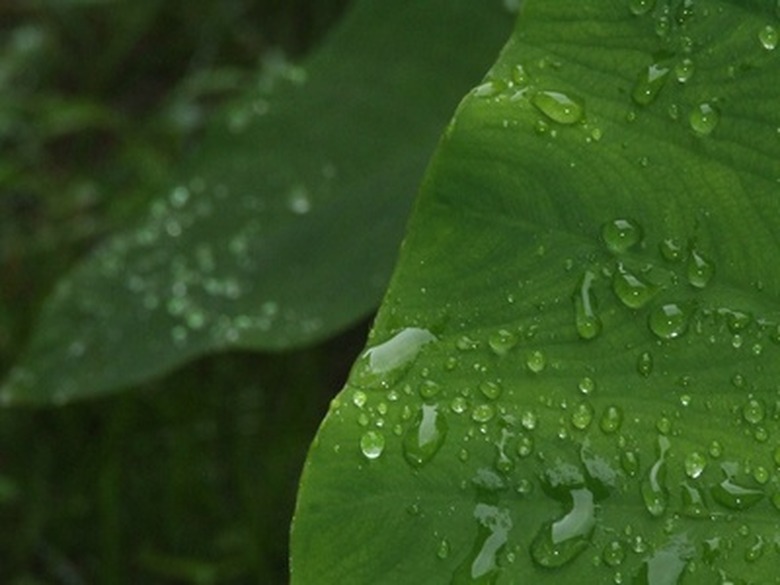How To Keep Elephant Ears Over The Winter
Things Needed
- Pruning sheers
- Spade
- Garden hose
- Milk crates
- Peat moss or sawdust
- Pots
- Potting mix
The elephant ear, a tender plant in the begonia family, is named for its large leaves. Tropical in origin, elephant ears, or Colocasia esculenta, are grown from tubers, which produce corms or fleshy storage structures. The corms grow into stems when the plant comes out of dormancy. In temperate climates, elephant ear corms must be brought indoors to protect them from harsh winter temperatures.
Store the corms
Step 1
Dig corms in the fall, after a light frost has turned the leaves a little brown. Prior to digging, trim the stems so about 6 inches remain. Then carefully dig with the spade several inches away from the base of the plant in order to preserve much of the root structure. Avoid skinning the fleshy structure, which could reduce the chances of successful winter storage.
- The elephant ear, a tender plant in the begonia family, is named for its large leaves.
- Tropical in origin, elephant ears, or Colocasia esculenta, are grown from tubers, which produce corms or fleshy storage structures.
Step 2
Wash soil from the corms gently with a garden hose and allow them to air dry. You may divide larger corms if you wish to increase your stock of elephant ears.
Step 3
Cure the corms at 60 to 70 degrees Fahrenheit for one to three days in a well-ventilated area. Then inspect the corms for insects and disease. Dust them with an insecticide-fungicide mixture specifically labeled for elephant ears.
Step 4
Place corms in milk crates or other well-ventilated containers. Pack the bulbs with peat moss or sawdust, which usually hold enough moisture to keep corms from shriveling.
- Wash soil from the corms gently with a garden hose and allow them to air dry.
Step 5
Set the crates in a dark cool basement or cellar with a temperature between 40 and 50 degrees. Inspect the corms each month and remove any rotting or shriveling ones. Compost rotten corms and spray shriveled ones with a little tepid water to get them to plump up again. Replace sprayed corms in the storage sawdust or peat moss.
Step 6
Repot the corms when it is six to eights weeks before the last frost. Plant the corms blunt end down, covered with 2 inches of potting soil. This provides a head start on the growing season, yielding larger, fuller garden plants. Then plant elephant ears outdoors once the danger of frost has passed.
- Set the crates in a dark cool basement or cellar with a temperature between 40 and 50 degrees.
- Plant the corms blunt end down, covered with 2 inches of potting soil.
Repot indoors
Step 1
Plant your elephant ears in a pot large enough to allow room for the tubers to produce the coming year's corms.
Step 2
Bring the plant indoors when frost threatens and set it in a south window.
Step 3
Keep the soil moist and fertilize at half the recommended strength for as long as the plant is producing new leaves. Add humidity to the plant's environment by setting the pot on pebbles in a tray or shallow pan. Pour water in the tray, but not enough to touch the bottom of the pot. Check and add water to the tray as needed.
